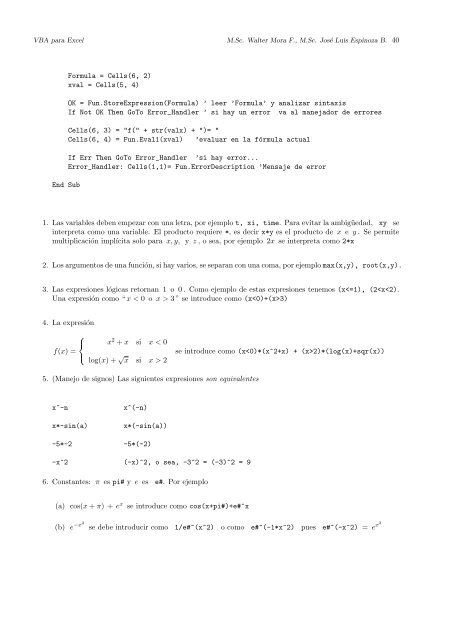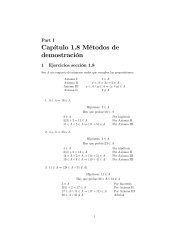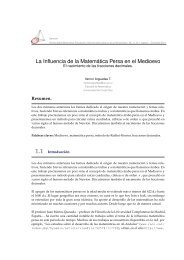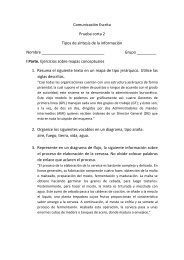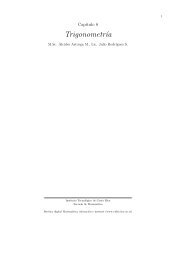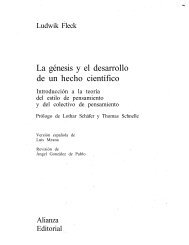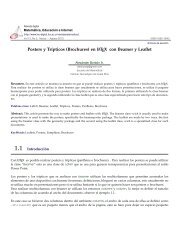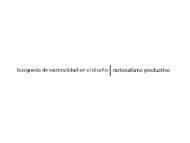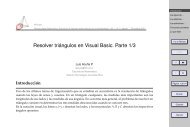Programación Visual Basic (VBA) para Excel y Análisis ... - TEC-Digital
Programación Visual Basic (VBA) para Excel y Análisis ... - TEC-Digital
Programación Visual Basic (VBA) para Excel y Análisis ... - TEC-Digital
You also want an ePaper? Increase the reach of your titles
YUMPU automatically turns print PDFs into web optimized ePapers that Google loves.
<strong>VBA</strong> <strong>para</strong> <strong>Excel</strong> M.Sc. Walter Mora F., M.Sc. José Luis Espinoza B. 40<br />
End Sub<br />
Formula = Cells(6, 2)<br />
xval = Cells(5, 4)<br />
OK = Fun.StoreExpression(Formula) ’ leer ’Formula’ y analizar sintaxis<br />
If Not OK Then GoTo Error_Handler ’ si hay un error va al manejador de errores<br />
Cells(6, 3) = "f(" + str(valx) + ")= "<br />
Cells(6, 4) = Fun.Eval1(xval) ’evaluar en la fórmula actual<br />
If Err Then GoTo Error_Handler ’si hay error...<br />
Error_Handler: Cells(1,1)= Fun.ErrorDescription ’Mensaje de error<br />
1. Las variables deben empezar con una letra, por ejemplo t, xi, time. Para evitar la ambigüedad, xy se<br />
interpreta como una variable. El producto requiere *, es decir x*y es el producto de x e y . Se permite<br />
multiplicación implícita solo <strong>para</strong> x, y, y z , o sea, por ejemplo 2x se interpreta como 2*x<br />
2. Los argumentos de una función, si hay varios, se se<strong>para</strong>n con una coma, por ejemplo max(x,y), root(x,y).<br />
3. Las expresiones lógicas retornan 1 o 0 . Como ejemplo de estas expresiones tenemos (x


